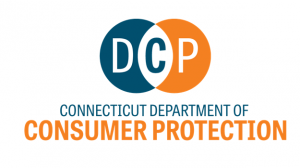
 October 26, 2022
October 26, 2022
From the Office of M. Caitlin S. Anderson
Liquor Control Division Director
Guidance Statement Regarding Value-Added Packaging
This statement will clarify the price posting of value-added packaged alcoholic beverage items, otherwise known as “VAPs”, by manufacturers, out-of-state shippers, and wholesalers. A VAP is created by adding an item or upgrade to the packaging of a naked bottle. A “naked bottle” is a brand label registered alcoholic beverage product that is similar in all regards to the alcoholic beverage contained in a VAP, except it is a stand-alone product sold without other items included in its packaging. For purposes of this discussion, there are three types of VAPs – (1) packaging VAPs, (2) nonalcoholic VAPs, and (3) alcoholic VAPs:
-
- A packaging VAP consists of the naked bottle plus special or upgraded packaging. For example, a bottle of wine on its own is a naked bottle, but when it is packaged in a specialty wood crate it becomes a VAP. Note that changing the design of a label or outer packaging does not, on its own, create a VAP.
- A nonalcoholic VAP consists of the naked bottle with a nonalcoholic item added to its packaging. For example, a nonalcoholic VAP could consist of a bottle of tequila packaged with a nonalcoholic margarita mix, a bottle of rum packaged with glassware, or a bottle of wine packaged with a corkscrew. The nonalcoholic item must be worth less than the naked bottle.
- An alcoholic VAP consists of two or more naked bottles packaged together as one item; the bottles may be the same or different sizes. For example, a “hitchhiker” is a special type of alcoholic VAP consisting of a nip hung from the neck of a larger alcohol bottle. Other examples include a bottle of red wine packaged with a bottle of white wine, or a 750ml bottle of 5-year aged whiskey packaged with a 100ml bottle of 10-year aged whiskey.
Note that a VAP may fall into more than one of the above categories. For example, two bottles of wine could be packaged together in a leather bag with two wine glasses.
All VAPs must be price posted to be sold in Connecticut. The pricing of VAPs is controlled by minimum bottle statutes and regulations, as well as the prohibition against inducements. More specifically:
-
-
- General Statutes § 30-63(b) states “nor shall such manufacturer, wholesaler or out-of-state shipper permittee allow in any form any discount, rebate, free goods, allowance or other inducement for the purposes of making sales or purchases.”
- General Statutes § 30-63(c) states “each manufacturer, wholesaler and out-of-state shipper permittee shall post with the department, on a monthly basis, the bottle, can and case price of any brand of goods offered for sale in Connecticut.” See also of Conn. State Agencies §§ 30-6-B4(a) and 30-6-B12(a) (requiring price posting of “all alcoholic liquors offered for sale”).
- General Statutes §§ 30-68i and 30-68l define the minimum selling price for manufacturer, out-of-state shippers, and wholesalers. No such permittee may sell below the “cost” of the item. In determining cost, such permittees must consider not only the cost of all spirits and ingredients, but also “containers, labels, caps, [and] closures,” amongst other costs.
-
Upon construing these statutes and regulations together, it is first clear that all individual alcoholic beverages contained in a VAP must be price posted.[1] Connecticut statutes and regulations plainly state that “any brand of good offered for sale” and “all alcoholic liquors offered for sale” must be individually posted. For example, to sell a hitchhiker, both the naked bottle and the nip must be separately price posted.
Second, it is also clear that the posted price of a VAP must exceed the value of the naked bottle, or the price of the VAP could violate both the prohibition against selling below cost and the prohibition against inducements. If a VAP is priced posted the same as the naked bottle, several potential violations could be implied:
-
-
- The added item or upgraded packaging could be considered a free inducement to encourage a purchase in violation of General Statutes § 30-63(b);
- To account for the value of the added item within the VAP or the value of the upgraded packaging, the value of the naked bottle must therefore be lower than its posted price in violation of General Statutes §§ 30-68i and 30-68l;
- The price of the VAP has not been properly calculated under the minimum bottle requirements in violation of General Statutes §§ 30-68i and 30-68l; or
- In the case of an alcoholic VAP, one item has not been price posted in violation of Regulations of Connecticut State Agencies §§ 30-6-B4(a) and 30-6-B12(a).
-
The posted price of a VAP should therefore always be more than the posted price of the naked bottle(s) contained within it. An alcoholic VAP, consisting of two or more naked bottles of alcohol, cannot be posted less than the cumulative sum of each bottle’s posted price. For example, if the naked bottle in a hitchhiker is price posted at $10.00 and the nip is price posted at $3.00, then the hitchhiker must be posted at a minimum of $13.00.
Third, and lastly, both price posting tiers are equally obligated to price the VAP at a price point higher than the naked bottle. As noted above, the inducement and pricing laws apply equally across manufacturers, out-of-state shippers, and wholesalers alike. Manufacturers and out-of-state shippers price posting to wholesalers must ensure their posted prices comply with these rules, much as wholesalers posting prices to retailers must also comport with these rules.
[1]VAPs – regardless of type – must be preapproved by the Department. Moreover, manufacturers, out-of-state shippers, and wholesalers should be aware of case size configuration under General Statutes 30-1(6). VAPs can result in an off-case size requiring Department approval.
If you have any questions regarding this or any liquor-related matter, please email us at dcp.liquorcontrol@ct.gov.
M. Caitlin S. Anderson, Liquor Control Division Director
The Department of Consumer Protection, through the State Liquor Control Commission, oversees all sales of liquor in the State of Connecticut. 450 Columbus Boulevard, Suite 901, Hartford, CT 06103 | TDD (Telecommunications Device for the Deaf): (860) 713-7240 website: http://www.ct.gov/dc An Affirmative Action/Equal Opportunity Employer.



